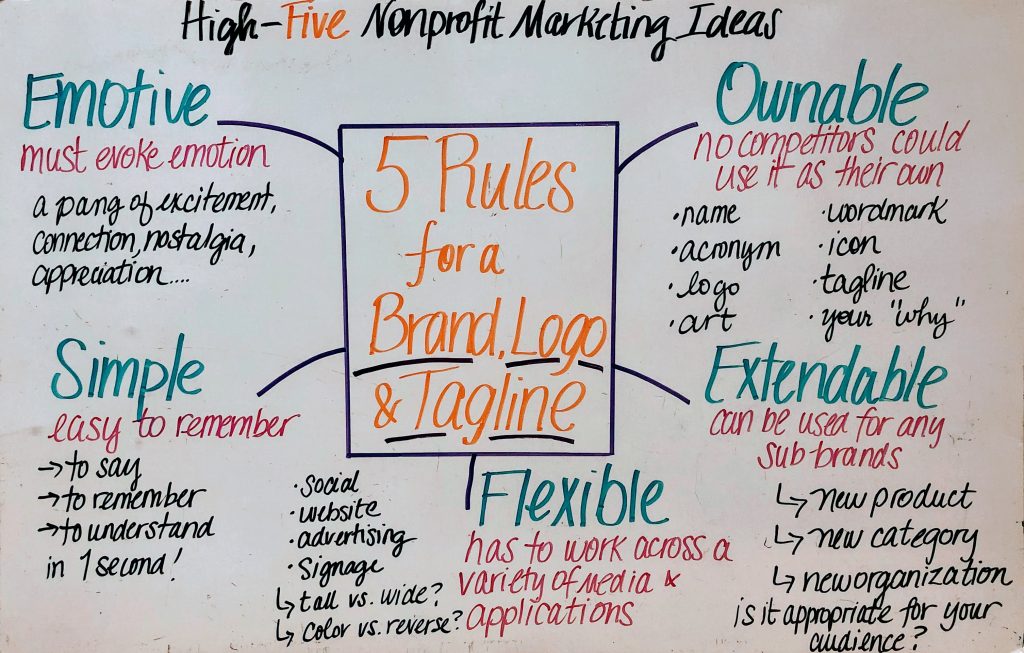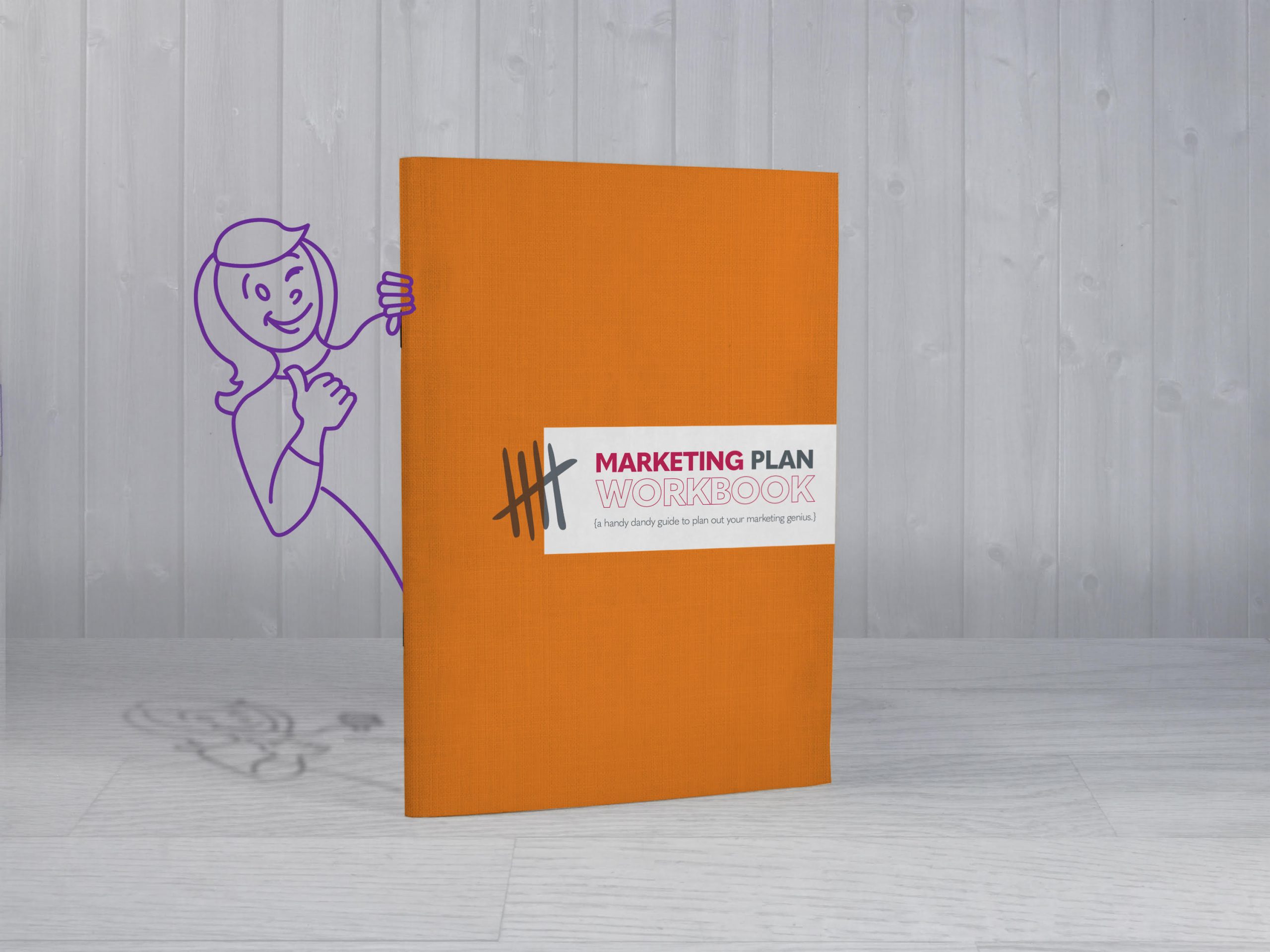5 Rules for a Brand Name, Logo, or Tagline
Episode Script:
Hi! Welcome to the latest episode of The High-Five Nonprofit Marketing Ideas. I’m Julia McDowell, Marketing Strategist for Five Ones. The High-Five is my video series where I break down complex nonprofit and association marketing topics into just FIVE things you need to know, all in five-ish minutes.
Today, I’m discussing rules, but these ones make more sense than, “You have to eat your vegetables before you can leave the table.” These rules are designed to help you build a brand that lasts. A brand that resonates with people and amplifies your message. And even if you have an established brand, you can still evaluate if you are following the rules and adjust your style or brand guidelines. Ok, let’s get into the 5 things your brand MUST follow.
It Must Be Ownable
The first thing you must ensure when building any brand is that you can have 100% ownership of it. Do research on the name you want to use, tagline, and any abbreviations or acronyms before you commit to it so you can see what, or who, else might be using something similar. For example, if your name is able to easily be made into an acronym of your biggest competitor, you might want to reconsider to cut down on any potential confusion. You want people to see your brand and know it’s yours.
Also, make sure you own your WHY and can translate that to a brand promise no one else can claim. Remember this, a lot of people try to imitate Apple, but it owns its unique user experience that permeates through to its products.
It Must Be Extendable
And in that same vein, you want a brand that is extendable to any sub-brands you launch. While you may think, “Woah, I’m not there yet,” it’s worth it to go through the exercise when you are creating your main brand. Sit down and think through, even broadly, what other branches you might create on your brand tree! For example, you might want to create a sister foundation down the line that has more of a niche focus. Make sure your brand is broad enough to extend in different directions. Think of the Smithsonian – they have a TV channel, a magazine, many museums, books, theater, and travel experiences. Phew, that’s a lot! But, all of those sub-brands fit nicely with the parent brand, and most importantly, everyone knows it’s connected to Smithsonian.
It Must Be Flexible
Your brand needs to work everywhere. Your logo can’t just look good on your website, it needs to be able to be resized for social media, business cards, letterhead, and any other form it needs to take. Your brand’s name or tagline shouldn’t be tough to translate if you work globally. The point is, you want your brand to show up the same way whenever and wherever you use it because that’s what builds brand recognition.
This is where a lot of brands create a mark and a logotype, along with a tagline that can be used together or separate where it is most appropriate. Think about the American Red Cross. Besides the name, the brandmark is the recognizable red cross, and while they don’t have a tagline right now, occasionally they will use one for a special campaign. Or here’s another good example: Nike has their name in that recognizable font, the Swoosh as their brandmark, and tagline “Just Do It.” Sometimes you see just the swoosh, sometimes just the tagline, and sometimes all three. Now, that’s flexibility!
It Must Be Simple
Simple can sometimes have a negative connotation, but not in brand building. Make sure your name, tagline, logo, and whatever else you may create for your brand is simple enough for your audience to remember it. So, if your name is 6 words, it may be time to re-brainstorm. If your tagline is a sentence, go back to the drawing board. If you are using a play on words, test it and see how long it takes for people to get it. When you think of bringing water to communities in Africa, do you think charity:water? When you think about pandas, do you think WWF? When you think of a four-leaf clover, do you think 4-H? That’s what you’re going for.
It Must Be Emotive
Emotions are how people relate to one another and to brands. And, when deciding whether to donate time, money, or resources, or become a member of your association, many people will make that decision with their heart more than their head. So, don’t go over the top, but make sure your passion for your brand’s cause comes through. That’s what people can connect to. That could be through the symbol you use for your wordmark, the colors you use, but make sure it makes you feel something!
So, now that you know what your brand needs, start doing your research, going through exercises, and testing out different ideas. It should be easier now that you have parameters to work within.




